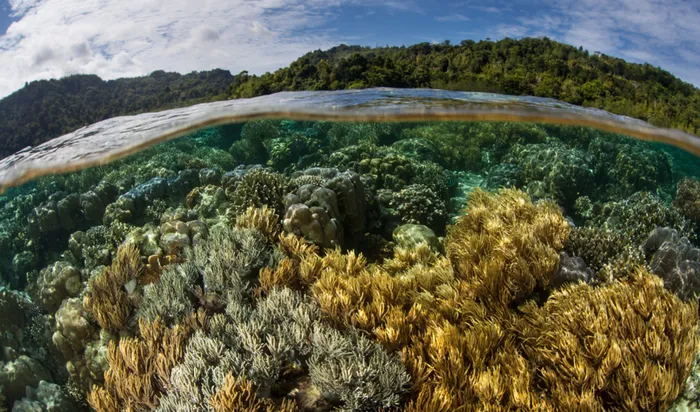Earth Day 2023: Biodiversity crucial for survival of humans

Picture: Supplied – One of the aspects that make Earth special is its immense biodiversity and how it is linked in a never ending cycle of death and rebirth, every organism, no matter how miniscule, plays a role in this cycle.
By Dominic Naidoo
Earth Month, celebrated in April every year, is a time to reflect on the beauty and fragility of our planet and to raise awareness about the importance of environmental conservation.
One of the aspects which make Earth special is its immense biodiversity and how it is linked in a never ending cycle of death and rebirth, every organism, no matter how miniscule, plays a role in this cycle.
A critical aspect of environmental conservation is biodiversity. Biodiversity refers to the variety of life on Earth, including the diverse array of species, ecosystems, and genetic diversity.
Biodiversity is not only vital for the survival of countless species but also plays a crucial role in sustaining the human species. In this article, I will attempt to explore the significance of biodiversity to the survival of the human species and why it should be a central focus during Earth Month and beyond.
Biodiversity is essential for ecosystem stability and resilience. Ecosystems are complex networks of plants, animals, and microorganisms that interact with each other and their environment.
These interactions create a delicate balance that allows ecosystems to function optimally. Biodiversity contributes to this balance by maintaining ecological stability.
For example, a diverse array of species within an ecosystem can help regulate the populations of other species, control diseases, and recycle nutrients. This stability is crucial for the provision of ecosystem services that directly or indirectly benefit human well-being, such as clean air and water, pollination of crops and climate regulation.
Biodiversity is also an important source of food, medicine and livelihood for a large part of the human population. Many of our staple food crops, such as rice, wheat, and corn, have their origins in wild relatives that form part of Earth's biodiversity.
These wild relatives provide crucial genetic traits that are used to develop disease-resistant and climate-resilient crop varieties. Biodiversity also serves as a source of medicinal compounds, with many traditional medicines being derived from plants and animals.
Rural and indigenous communities rely on natural resources for their subsistence and cultural practices.
Moreover, biodiversity is linked to economic prosperity and climate change mitigation. Many industries, such as tourism, agriculture, and pharmaceuticals, depend on biodiversity and ecosystem services.
The economic value of global biodiversity has been estimated to be in the trillions of dollars annually. Protecting and conserving biodiversity can also contribute to climate change mitigation efforts.
Forests, for example, act as carbon sinks, absorbing and storing carbon dioxide, a greenhouse gas that contributes to climate change. Forest biodiversity plays a crucial role in maintaining the health and resilience of these ecosystems, thereby enhancing their capacity to sequester carbon and mitigate climate change.
Despite its critical importance, biodiversity is facing unprecedented threats. Human activities, such as deforestation, habitat destruction, pollution, overexploitation of resources, and climate change, are causing rapid declines in biodiversity.
According to the Intergovernmental Science-Policy Platform on Biodiversity and Ecosystem Services (IPBES), up to one million species are at risk of extinction, many within decades, if we do not take immediate action to halt the loss of biodiversity. This loss of biodiversity has severe consequences for the survival of the human species.
The loss of biodiversity can lead to disruptions in ecosystem functioning and services that directly impact human well-being. An important example of this would be the loss of pollinators, such as bees and butterflies, which can result in reduced crop yields, leading to food shortages and increased food prices.
The loss of biodiversity can also lead to the emergence and spread of diseases, as intact ecosystems act as natural buffers that regulate the proliferation of disease-causing organisms.
A prime example of this was the deaths of over 50,000 people in India in the late 2000’s. These people died from rabies after being bitten by infected animals. The rabies outbreak began in the late 90’s after animals began feeding on livestock carcasses which were left to rot due to the local extinction of vultures in the area. The vultures were poisoned in their thousands after feeding on carcases containing a drug used by livestock farmers.
The loss of biodiversity can weaken ecosystem resilience to environmental changes, such as climate change, making ecosystems more vulnerable to disturbances and less capable of providing the services that humans rely on.
Protecting and conserving biodiversity is not only an environmental issue but also a human survival issue.
Earth Month presents an opportunity to raise awareness about the value of biodiversity and the urgent need to take action to protect it.
Thank you for coming to my Ted Talk.
Dominic Naidoo is an environmental activist and writer
This article was written exclusively for The African. To republish, see terms and conditions.